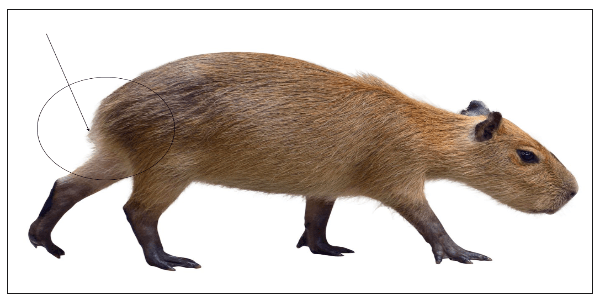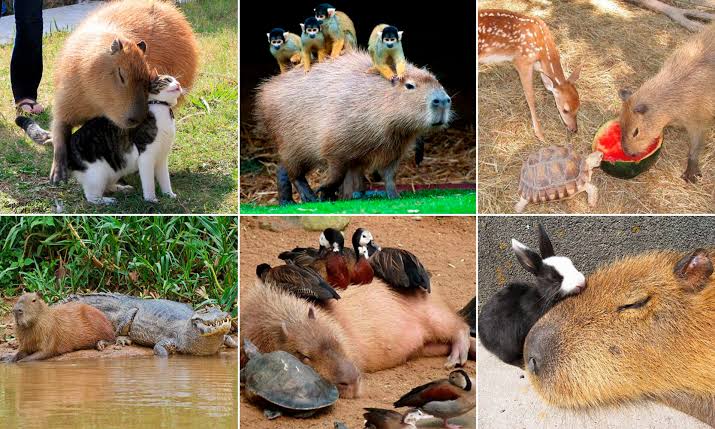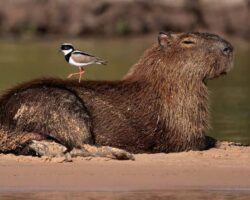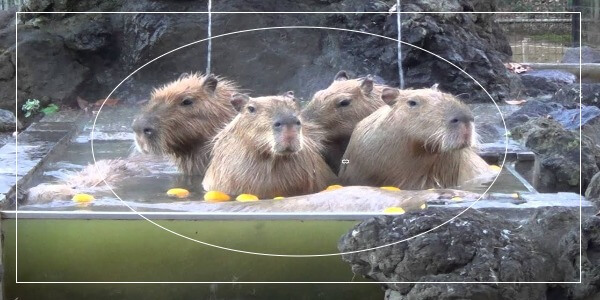Capybaras are herbivorous semi-aquatic animals that live within South America’s wetlands. These animals possess a deep affinity for aquatic environments, spending much of their time submerged in cool, refreshing waters. They have earned the title of the world’s largest and most social rodent because of their size and interaction.
Regarding feeding patterns, capybaras thrive on a vegetation diet ranging from succulent grasses to leafy shrubs. This vegetation provides the animal with the nutrition they need. Since capybaras are semi-aquatic animals, many wonder if they eat water lilies. We will get right to the answer and discuss Capybara’s diet below.
Although scientific research on capybaras and water lilies may be limited, it is worthwhile to point out that these semi-aquatic animals can and often eat water lilies as part of their diet. While some snack on it, there have been several reports or sightings of these animals eating it as a main meal. It largely depends on the environment and the alternative vegetation or grass available.
Many reports and personal accounts have also described capybaras nibbling at leaves or consuming entire water lilies. Although scientific studies have focused on the capybara diet and feeding behavior without delving into their interactions with water lilies, observing their ecological context can easily gain more understanding.
Water lilies are abundant in wetland environments where capybaras live. These semi-aquatic mammals graze on vegetation near water bodies. Given their proximity to water lilies and adaptability to diverse diets, capybaras may incorporate them into their diet.
What are the Benefits of Water Lilies to Capybaras?
Water lily benefits capybaras. However, these benefits don’t stop at nutrition alone. They also offer protection and predatory avoidance for these semi-aquatic animals. Here are some of the benefits below.
1. Nutritional value
Water lilies possess various nutrients and compounds that contribute to a well-rounded diet. They contain essential vitamins, minerals, and dietary fiber, supplementing Capybara’s nutritional needs. Consuming water lilies may provide additional dietary diversity and contribute to capybara health and well-being.
2. Hydration Source
Capybaras have a semi-aquatic lifestyle and spend much time in and around water bodies. With their floating leaves and submerged roots, water lilies maintain water quality and clarity. They are vital in oxygenating the water and reducing excessive algae growth.
This ensures a healthy aquatic environment. Capybaras may benefit indirectly from water lilies’ presence, as they rely on these water sources for hydration and cooling.
3. Shelter and Protection
Water lilies create a unique habitat within aquatic ecosystems, forming dense patches of vegetation that provide shelter and protection. Water lilies’ floating leaves and tangled roots create a refuge for small organisms, insects, and fish. These aquatic microhabitats attract a variety of prey species, which, in turn, attract capybara.
By foraging in areas with water lilies, capybaras could access abundant food and use their hiding places. It also provides natural camouflage for capybaras to hide themselves from predators.
4. Thermal Regulation
Capybaras are highly adapted to aquatic environments and regulate their body temperature. Water lilies offer shade and act as a natural canopy, reducing direct sunlight exposure. This shade can help capybaras regulate body temperature and prevent overheating during hot periods. Capybaras can find cooler spots and maintain a comfortable body temperature by seeking refuge in areas with water lilies.
Are Water Lilies a Significant Food Source for Capybaras?
Yes. Water lilies are a significant food source for capybaras. With their feeding habits generally focused on grasses, aquatic plants, and various vegetation, it is pertinent to point out that water lilies are among the vegetation abundant in wetland environments. This proximity allows capybaras to feed on water lilies when other preferred vegetation is scarce or inaccessible.
Although many ecological facts and individual reports support this statement, it is imperative to note that there isn’t any scientific evidence to support this claim. Research has focused on the general diet of these animals without narrowing it down to specific plants. You should also note that while water lilies can be a significant food source, capybaras can opt for other alternatives if they find them more delicious.
Can Capybaras co-exist with Water Lilies in their Natural Habitats?

Yes, capybaras and water lilies can coexist in their natural habitats. Capybaras are semi-aquatic mammals that inhabit wetland areas, including rivers, marshes, and ponds, where water lilies thrive. These environments provide a diverse range of vegetation, including grasses, aquatic plants, and, potentially, water lilies.
Capybaras have adapted to their wetland habitats and can navigate and interact with the surrounding vegetation. Water lilies, on the other hand, use their leaves to form dark patches in the water.
Capybaras coexist with water lilies by utilizing their natural habitats and foraging on surrounding grasses and other vegetation. They may also incorporate water lilies into their diet when possible. Moreover, water lilies provide additional benefits for capybaras beyond potential food sources.
Conclusion
Capybaras are herbivorous semi-aquatic mammals that adapt to vegetarian diets. This diet consists of grasses, shrubs, and even water lilies. Several reports have reported capybaras nibbling on the leaves or even ingesting the entire plant. You should note that these animals have different dietary preferences, with some opting for other plants instead of waterlilies.
However, there is a lack of sufficient research on water lilies as a primary food source for capybaras. Most reports and statements are based on individual findings and ecological factors. We have discussed all of this information and more in this article.



![How Long Do Capybaras Live? - [Answered] How Long Do Capybaras Live](https://capybaratips.com/wp-content/uploads/2023/03/Capybara-Pix-250x200.webp)

![Why Do Capybaras Not Have Tails? - [Answered] Why Do Capybaras Not Have Tails](https://capybaratips.com/wp-content/uploads/2023/03/Capy-Tail-250x200.webp)



